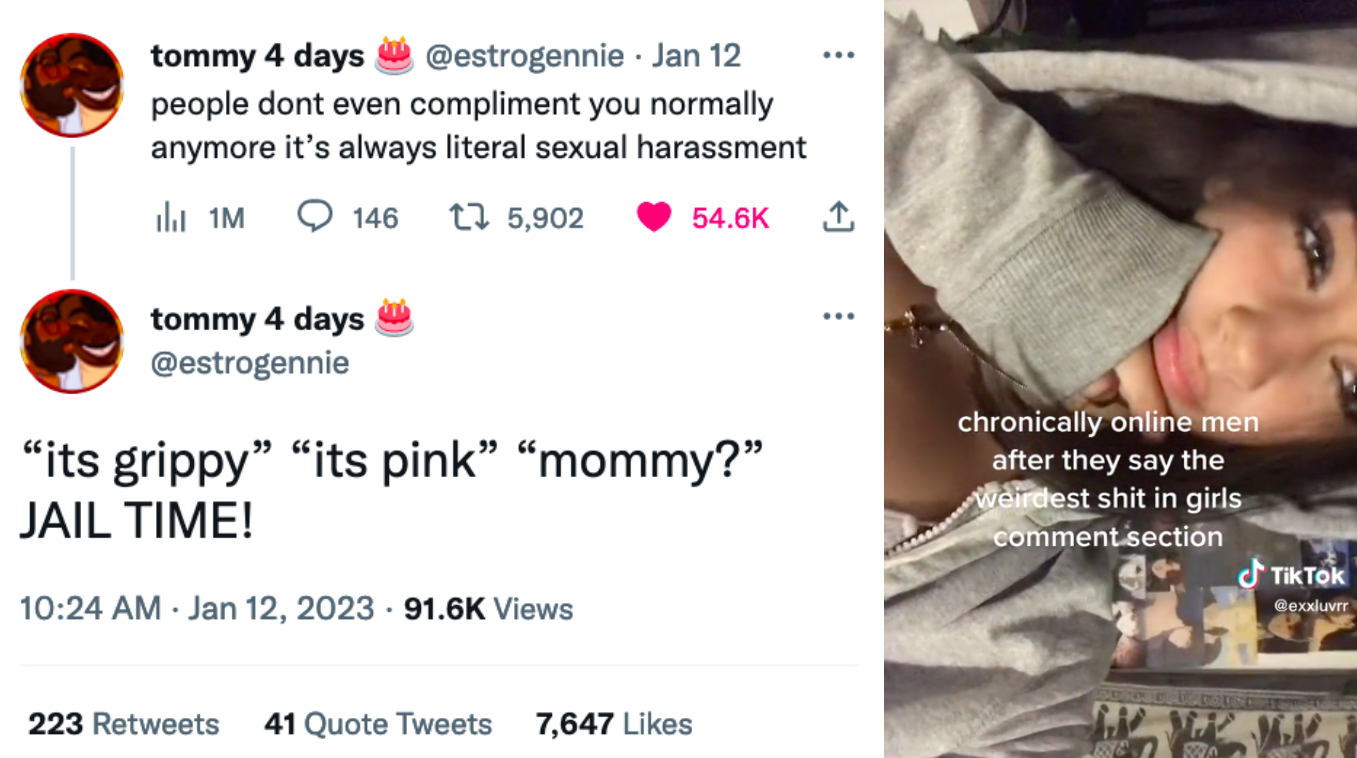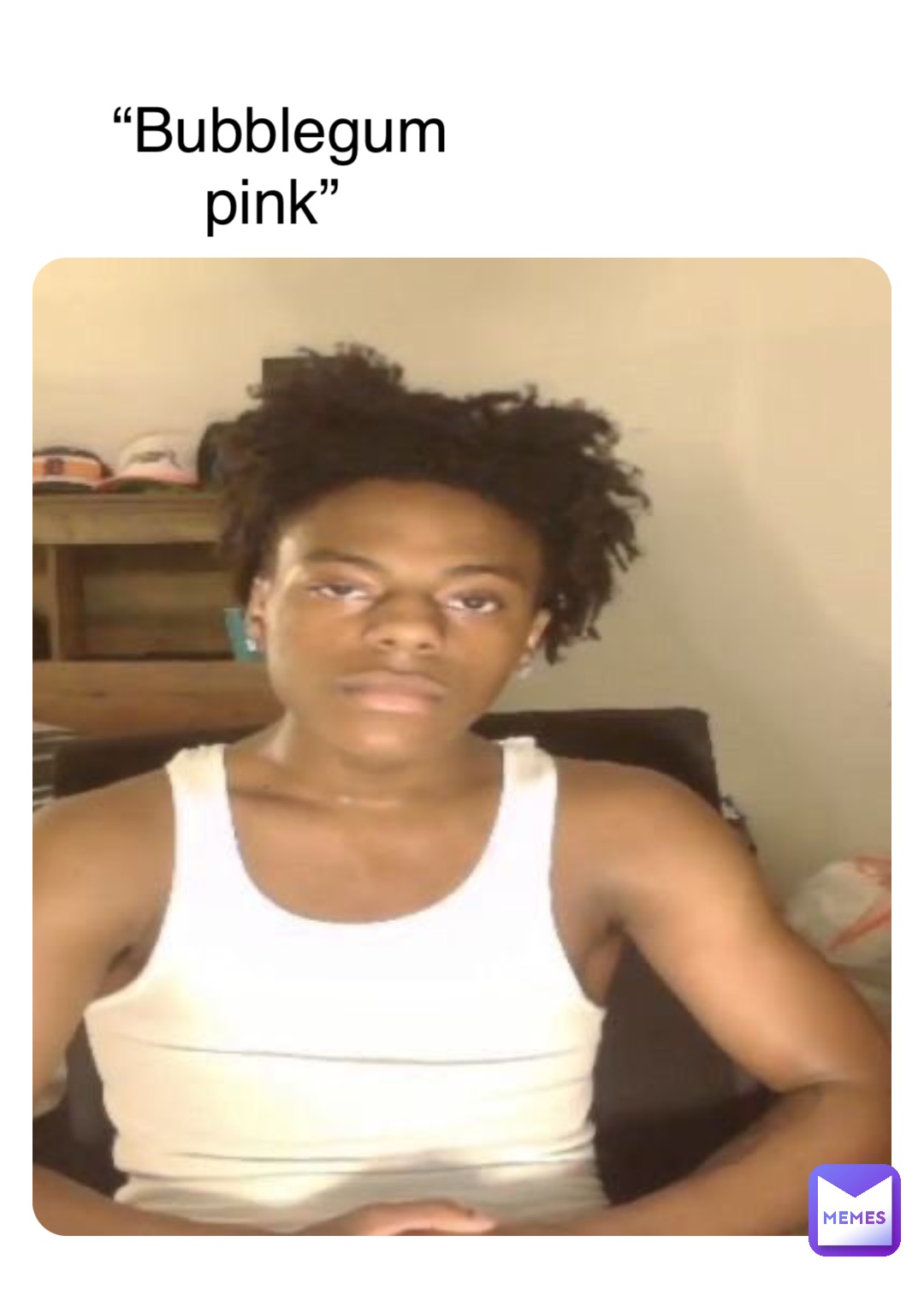Tiktok's "Bubblegum Pink": What Does It Mean? | Explained
Is a seemingly innocent phrase now a digital red flag? The innocuous term "bubblegum pink," once associated with a cheerful color, has taken on a disturbing and often predatory meaning on TikTok, exposing a dark underbelly of online culture.
The digital landscape, particularly the ever-evolving world of social media, has a peculiar knack for transforming the everyday. Simple words and phrases, once carrying straightforward meanings, can be warped and repurposed, taking on entirely new and often unsettling connotations. Nowhere is this phenomenon more evident than on TikTok, the platform that has become a cultural incubator for trends, memes, and, unfortunately, inappropriate and disturbing behaviors.
The phrase "I know it's pink," along with variations such as "I bet it's bubblegum pink," "I know it's grippy," or even the hex code for a specific shade of pink (#ff94a4), has become a pervasive presence in the comments sections of TikTok videos featuring attractive young women. These comments, often left by male users, are not innocent observations about the color palette; they are coded references, laden with a sexually charged subtext that has sent shockwaves through the platform and beyond.
For those unfamiliar with the darker corners of online discourse, these comments might appear innocuous. However, for anyone with even a passing understanding of the current trends, the meaning is chillingly clear. "Bubblegum pink," a term that once evoked images of childhood treats and playful innocence, has been weaponized to refer to the genitalia of young girls and women. The comments are not mere compliments; they are veiled expressions of sexual interest, often bordering on harassment.
The origin of this disturbing trend can be traced back to a combination of factors, including the inherent voyeurism of social media, the anonymity it provides, and the increasing prevalence of online spaces where inappropriate behavior is normalized. The TikTok algorithm, designed to keep users engaged, often amplifies content that generates high levels of interaction, inadvertently promoting these problematic comments and perpetuating the cycle.
The very nature of "bubblegum pink" and its connection to female genitalia also highlights the concerning trend of hypersexualization, particularly of young women. The comments are often laced with expectations that the women should conform to the traits of a little girl, and they are often aimed at creating a fantasy of youthful appearance.
Heres a table summarizing the critical aspects of the "bubblegum pink" phenomenon on TikTok:
| Aspect | Details |
|---|---|
| Origin | Emerged on TikTok, likely originating within certain online subcultures with a history of objectifying women. |
| Meaning | Code for referring to the genitalia of young girls and women, often in a sexually suggestive context. |
| Common Phrases | "I know it's pink," "I bet it's bubblegum pink," "I know it's grippy," "#ff94a4" (hex code for a shade of pink). |
| Target | Primarily directed towards attractive young women on the platform. |
| Impact | Contributes to the hypersexualization of women, creating a hostile online environment. |
| Red Flag | Used as a red flag to identify potentially inappropriate behavior and possible harassment. |
| Associated Actions | Includes phrases like "something snapped in me," "who's gonna stop me," and references to specific dates (e.g., "wait until April 24th"), implying predatory intent. |
The shift in meaning is a stark reminder of how quickly the digital world can alter the language we use. It is a prime example of how online culture can transform innocent words into weapons of objectification and harassment.
The color "bubblegum pink" itself is linked to a spectrum of vibrant pink shades, with #ff94a4 being a popular version, it is not just the color itself that is becoming the issue; it is the context in which it is used. The use of this color as a comment on TikTok, in reference to female genitalia has caused great harm.
The irony of this situation is not lost on many. The very platform that should be a space for self-expression, creativity, and connection has, in this instance, become a place where young women are subject to sexual harassment.
The phenomenon extends beyond TikTok. It highlights a larger issue of how men are socialized to view women. The objectification of women is not new, but its pervasive presence on social media is a serious concern. This is amplified by the ease with which these comments can be made and the difficulty in fully moderating them. Men are using these comments as a way to show expectations on women.
The discussions, memes, and trends associated with this phrase are not just about a color, but the objectification of women, normalizing a disturbing form of online behavior. It is a sign of the times, exposing the ease with which malicious intent can permeate the online space, and the need for greater vigilance and accountability.
The content related to the phrase, includes videos by creators like @thememehub_069, @bilalahy, and @mindofrezclips8, who have engaged with the topic either humorously or through educational content, but the underlying theme of objectification persists.
The implications of "bubblegum pink" on TikTok are significant. It's a clear indicator of the harmful environment that women face online and how casual objectification can lead to more serious forms of harassment. The phrase acts as a signal to identify inappropriate users, and helps to foster discussions about the need for stricter moderation and user safety.
This is a call for greater awareness, responsibility, and action. It's a reminder that words, even seemingly innocent ones, can carry hidden meanings and inflict real harm. As we navigate the digital world, it is essential that we remain aware of the potential dangers and work towards a safer and more respectful online environment for everyone.
The shift in meaning shows how digital platforms transform everyday language. Words and phrases take on new and often disturbing meanings. "Bubblegum pink" has become a tool for objectification and harassment, especially on TikTok.
It's important to recognize this trend for what it is: a reflection of broader societal problems. The exploitation of women is not unique to TikTok. The issue is the platforms that allow the behavior, as well as the ease with which these comments can be made and the difficulties in moderating them. This also brings in expectations of women conforming to how some men want them to be.
The use of this phrase and variations demonstrates how quickly online culture can turn ordinary terms into instruments of harm. As users, we must be more vigilant, promoting a digital landscape that respects the dignity and safety of all individuals.


